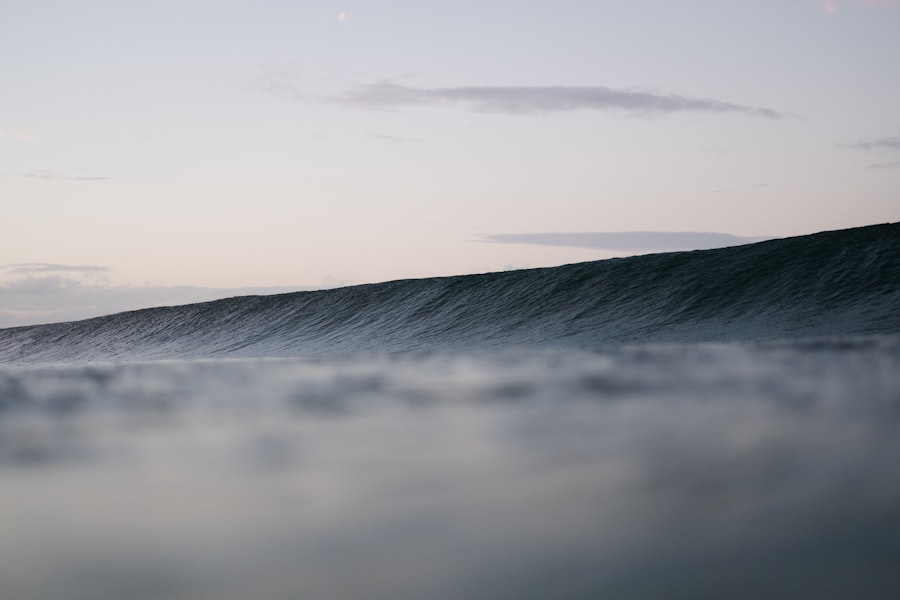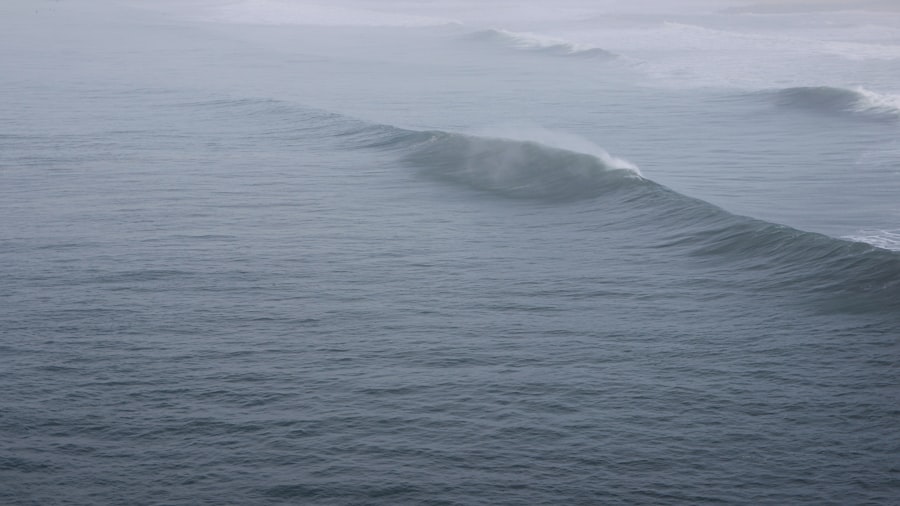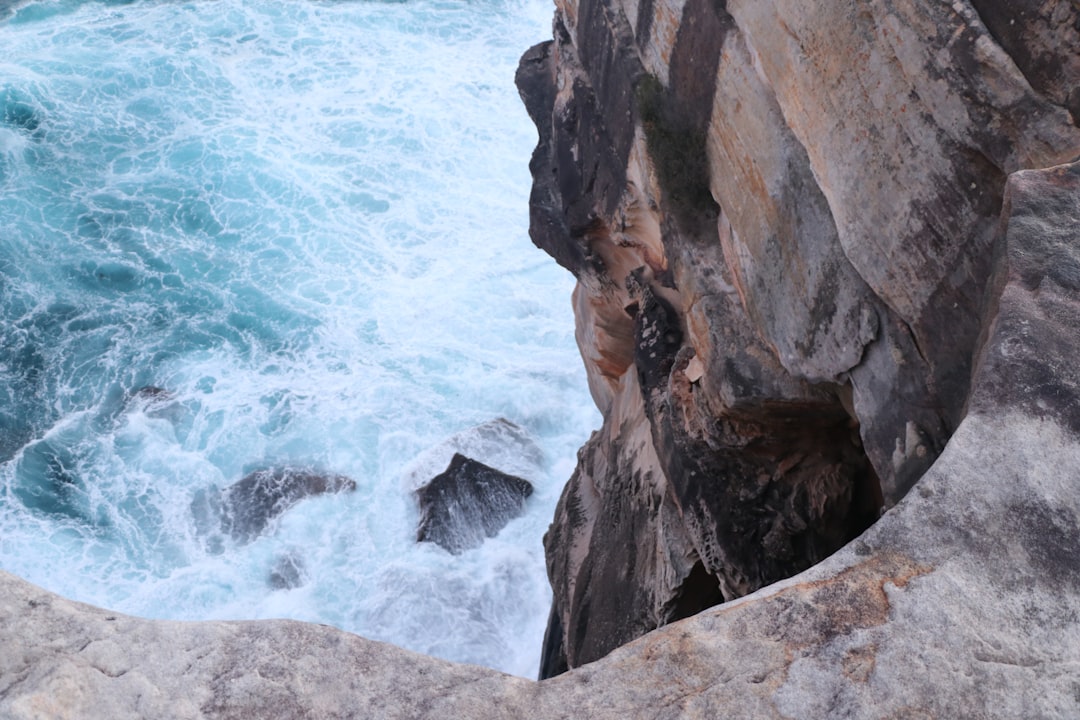The Drake Passage, a body of water located between the southern tip of South America and Antarctica, is notorious for its tumultuous seas and unpredictable weather patterns. Today, the wave height in this region is a topic of significant interest for mariners, researchers, and environmentalists alike. The passage is known for its extreme conditions, which can change rapidly, making it essential to stay informed about current wave heights.
As vessels traverse these waters, understanding the wave dynamics can mean the difference between a safe journey and a perilous one. Monitoring wave height in the Drake Passage is not merely an academic exercise; it has real-world implications for shipping routes, fishing activities, and scientific research expeditions. With advancements in technology and data collection methods, real-time updates on wave conditions are more accessible than ever.
This article delves into the significance of the Drake Passage, the importance of monitoring wave heights, and the various factors that influence these conditions.
Key Takeaways
- The Drake Passage experiences some of the highest wave heights in the world, making it a crucial area for wave monitoring and research.
- Understanding wave height in the Drake Passage is important for predicting and preparing for extreme maritime conditions, as well as for scientific research and climate studies.
- Monitoring wave height in the Drake Passage provides real-time information through live map updates, allowing for better decision-making for maritime activities in the region.
- Factors such as wind speed, ocean currents, and the presence of icebergs can influence wave height in the Drake Passage, making it a complex area to monitor.
- High wave height in the Drake Passage can have significant impacts on maritime activities, including safety risks, potential damage to vessels, and logistical challenges.
Understanding the Drake Passage and its significance
The Drake Passage is a vital maritime corridor that connects the Atlantic and Pacific Oceans. It serves as a critical route for vessels traveling to and from Antarctica, making it an essential area for international shipping and research expeditions. The passage is approximately 800 kilometers wide at its narrowest point and is characterized by its deep waters and strong currents.
The convergence of these two major oceans creates unique marine ecosystems and weather patterns that are both fascinating and challenging. The significance of the Drake Passage extends beyond its geographical location. It plays a crucial role in global ocean circulation, influencing climate patterns far beyond its immediate vicinity.
The mixing of warm and cold waters in this region contributes to the regulation of temperatures across the globe. Additionally, the passage is home to diverse marine life, including whales, seals, and various fish species, making it an area of interest for marine biologists and conservationists.
Importance of monitoring wave height in the Drake Passage

Monitoring wave height in the Drake Passage is essential for several reasons. First and foremost, it provides critical information for navigation safety. The unpredictable nature of the waves can pose significant risks to vessels traversing these waters.
By keeping track of wave heights, mariners can make informed decisions about their routes and timing, potentially avoiding dangerous conditions that could lead to accidents or capsizing. Furthermore, understanding wave height is vital for scientific research. Researchers studying climate change, oceanography, and marine biology rely on accurate data to analyze trends and make predictions about future conditions.
High wave heights can affect sediment transport, nutrient distribution, and marine habitats, all of which are crucial for maintaining healthy ecosystems. Thus, monitoring wave heights not only aids navigation but also contributes to broader scientific knowledge.
Live map updates and their role in providing real-time information
| Live Map Updates | Role in Providing Real-Time Information |
|---|---|
| Continuous updates of geographical data | Allows users to track real-time movement and changes |
| Integration with sensor data | Enables monitoring of traffic, weather, and other dynamic conditions |
| Supports emergency response | Helps authorities and responders to locate and assist in crisis situations |
| Enhances logistics and transportation | Optimizes route planning and delivery management |
In today’s digital age, live map updates have revolutionized how information about wave heights is disseminated. Various platforms provide real-time data on wave conditions in the Drake Passage, allowing mariners and researchers to access crucial information at their fingertips. These live maps utilize advanced satellite technology and buoy data to present accurate wave height readings, wind speeds, and other relevant meteorological information.
The role of live map updates extends beyond mere convenience; they enhance safety and efficiency in maritime operations. For instance, fishing vessels can adjust their schedules based on current wave conditions, ensuring that they operate in safer environments. Similarly, research expeditions can plan their activities around predicted weather patterns, maximizing their chances of success while minimizing risks.
The immediacy of live updates fosters a proactive approach to navigating the challenges posed by the Drake Passage.
Factors influencing wave height in the Drake Passage
Several factors contribute to the wave height experienced in the Drake Passage. One of the most significant influences is wind speed and direction. Strong winds can generate larger waves, while changes in wind patterns can lead to sudden shifts in wave conditions.
The geography of the passage itself also plays a role; as water flows through this narrow corridor, it can create powerful currents that amplify wave heights. Additionally, atmospheric pressure systems can impact wave conditions. Low-pressure systems often lead to stormy weather, resulting in increased wave activity.
Conversely, high-pressure systems may bring calmer seas. Seasonal variations also affect wave height; during certain times of the year, storms are more frequent, leading to higher average wave heights. Understanding these factors is crucial for predicting wave behavior and ensuring safe navigation through this challenging maritime region.
Impacts of high wave height in the Drake Passage

High wave heights in the Drake Passage can have far-reaching impacts on both maritime activities and the environment. For vessels navigating these waters, large waves can create hazardous conditions that increase the risk of accidents or damage to ships. Cargo vessels may face challenges in maintaining stability, while smaller boats may be at risk of capsizing altogether.
The unpredictability of high waves necessitates careful planning and risk assessment for all maritime operations. Beyond immediate safety concerns, high wave heights can also affect marine ecosystems. Increased turbulence can disrupt habitats for various marine species, impacting their feeding and breeding patterns.
Additionally, sediment displacement caused by strong waves can alter underwater landscapes, affecting the availability of resources for marine life. Understanding these impacts is essential for conservation efforts aimed at protecting the unique biodiversity found in the Drake Passage.
Safety implications for maritime activities in the region
The safety implications of navigating through high waves in the Drake Passage cannot be overstated. Mariners must be acutely aware of current conditions to avoid potential disasters. The combination of strong winds and high waves can create treacherous situations that challenge even experienced sailors.
As such, it is imperative for those operating in this region to have access to reliable information regarding wave heights. Moreover, safety protocols must be established and adhered to by all vessels operating in these waters. This includes having contingency plans in place for adverse weather conditions and ensuring that crews are trained to handle emergencies effectively.
The importance of safety cannot be overlooked; lives depend on making informed decisions based on accurate data regarding wave heights and other environmental factors.
Technology used for monitoring wave height in the Drake Passage
The technology employed to monitor wave height in the Drake Passage has advanced significantly over recent years. Satellite imagery plays a crucial role in providing comprehensive coverage of this vast area. Satellites equipped with specialized sensors can capture real-time data on wave heights, wind speeds, and other meteorological variables from space.
In addition to satellite technology, buoys equipped with sensors are strategically placed throughout the passage to collect localized data on wave conditions. These buoys transmit information back to monitoring stations, allowing for continuous updates on current conditions. The integration of these technologies enables researchers and mariners to access accurate information quickly, enhancing safety and operational efficiency.
Collaborative efforts in gathering and sharing wave height data
Collaboration among various organizations is essential for effective monitoring and sharing of wave height data in the Drake Passage.
Such partnerships facilitate comprehensive data collection efforts that benefit all stakeholders involved.
Moreover, sharing this data openly fosters a culture of transparency and cooperation among maritime operators and researchers alike. By making real-time information accessible to all parties involved, collaborative efforts enhance safety measures while promoting scientific research aimed at understanding ocean dynamics better. This collective approach ensures that everyone navigating or studying the Drake Passage has access to vital information that can inform their decisions.
Future developments in monitoring and predicting wave height in the Drake Passage
As technology continues to evolve, future developments in monitoring and predicting wave height in the Drake Passage hold great promise. Innovations such as artificial intelligence (AI) and machine learning algorithms are being explored to enhance predictive capabilities further. By analyzing historical data alongside real-time observations, these technologies could provide more accurate forecasts regarding wave conditions.
Additionally, advancements in sensor technology may lead to more robust monitoring systems capable of capturing even finer details about ocean dynamics. Enhanced data collection methods could improve understanding of how various factors interact to influence wave height in this region.
the value of staying informed about Drake Passage wave height today
In conclusion, staying informed about wave height in the Drake Passage is crucial for ensuring safe maritime operations while contributing to scientific understanding of this unique environment. The unpredictable nature of waves in this region necessitates constant monitoring and real-time updates to mitigate risks associated with navigation through these treacherous waters. As technology continues to advance and collaborative efforts expand among various stakeholders, access to accurate information will only improve over time.
Ultimately, understanding current conditions not only enhances safety but also supports broader efforts aimed at preserving marine ecosystems within this vital maritime corridor. The value of staying informed about Drake Passage wave height today cannot be overstated; it is an essential component of responsible navigation and environmental stewardship in one of the world’s most challenging oceanic regions.
Today, the Drake Passage is renowned for its challenging sea conditions, with wave heights that can reach impressive levels, making it a significant point of interest for maritime enthusiasts and researchers alike. For those interested in real-time data and live maps of wave heights in this treacherous stretch of water, a related article on MyGeoQuest provides valuable insights and resources. This article delves into the dynamics of the Drake Passage, offering a comprehensive overview of the factors influencing wave patterns and the technology used to monitor them. Whether you’re planning a voyage or simply curious about this infamous maritime route, the article serves as a useful guide to understanding the complexities of the Drake Passage’s wave conditions.
WATCH NOW! Drake Passage: Earth’s Deadliest Waters Revealed
FAQs
What is the Drake Passage?
The Drake Passage is the body of water between the southern tip of South America and the northern tip of the Antarctic Peninsula. It is known for its rough seas and challenging sailing conditions.
What is wave height?
Wave height refers to the vertical distance between the crest and the trough of a wave. It is a measure of the size of the waves in a body of water.
How is wave height measured?
Wave height is typically measured by instruments such as wave buoys, wave riders, or by visual observation from ships or platforms. The measurements are usually reported in meters or feet.
What is a live map of wave height?
A live map of wave height is a real-time visualization of wave heights in a specific area. It provides up-to-date information on the size and location of waves in a particular body of water.
Where can I find a live map of wave height in the Drake Passage today?
There are various websites and apps that provide live maps of wave height, including those specifically focused on the Drake Passage. These platforms use data from satellites, buoys, and other sources to create real-time visualizations of wave conditions.
